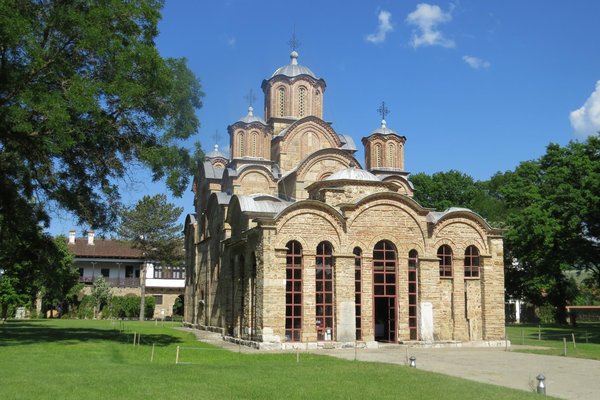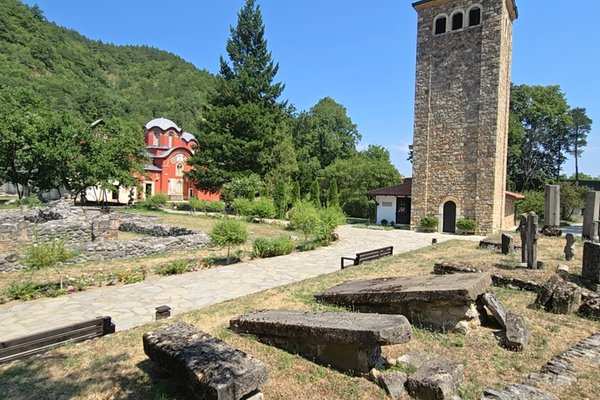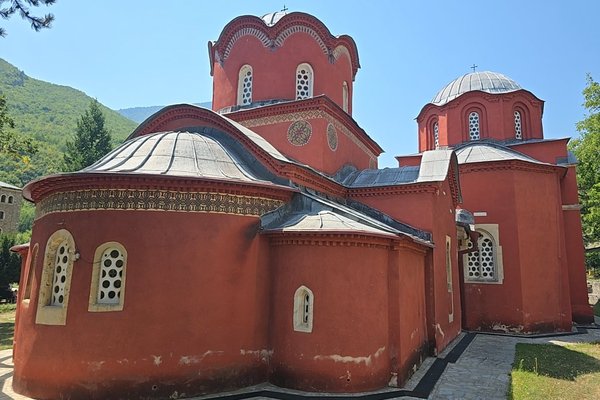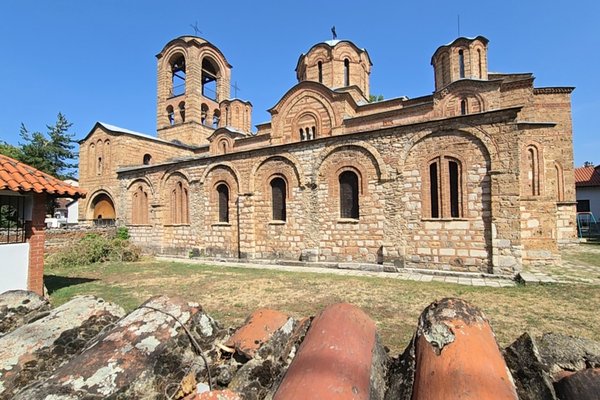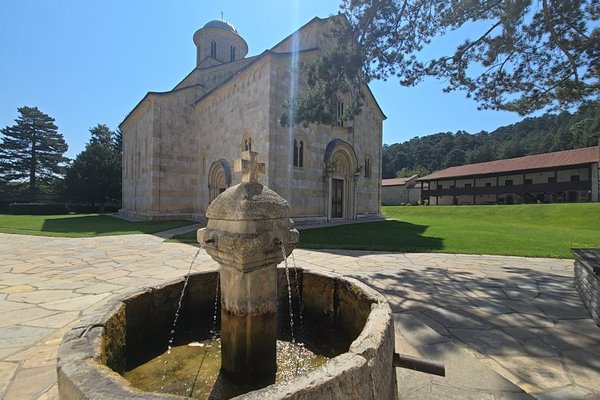Serbia
Medieval Monuments in Kosovo
Medieval Monuments in Kosovo comprises four Serbian Orthodox Christian churches and monasteries built in the 13th and 14th centuries.
They represent the development of the fusion of the eastern Orthodox Byzantine and the western Romanesque ecclesiastical architecture to form the so-called Palaiologos Renaissance style. It has a distinct style of mural painting of which rich examples can be seen in these churches, culminating in Gračanica.
Community Perspective: these are small Serbian-Orthodox enclaves within the territory of Kosovo, so be aware of the current Serbia-Kosovo political situation. The easiest one to reach on public transport is Gracanica, close to the Kosovan capital Pristina.
Site Info
Official Information
- Full Name
- Medieval Monuments in Kosovo (ID: 724)
- Country
- Serbia
- Status
-
Inscribed 2004
Site history
History of Medieval Monuments in Kosovo
- 2009: Reinforced Monitoring
- 2006: Extended
- To include the Patriarchate of Pec Monastery, Gracanica Monastery (former TWHS Gracanica Monastery (1986)) and the Church of the Virgin of Ljevica
- 2006: Name change
- From "Decani Monastery" to "Medieval Monuments in Kosovo"
- 2006: In Danger
- Difficulties to monitor the property due to political instability, post-conflict situation
- 2004: Inscribed
- Inscribed
- In Danger
- Difficulties to monitor the property due to political instability, post-conflict situation Since 2006
- Type
- Cultural
- Criteria
- ii
- iii
- iv
Links
- UNESCO
- whc.unesco.org
- Official
-
- kosovo.net — Gracanica Monastery
- kosovo.net — Our Lady of Ljeviš
- kosovo.net — Patriarchate of Pec Monastery
All Links
UNESCO.org
- whc.unesco.org — whc.unesco.org/
Official Website
- kosovo.net — Gracanica Monastery
- kosovo.net — Our Lady of Ljeviš
- kosovo.net — Patriarchate of Pec Monastery
- kosovo.net — Decani Monastery
News Article
- Nov. 13, 2020 apnews.com — Kosovo’s rival communities reach deal on World Heritage site
- Aug. 15, 2017 b92.net — "Unnecessary harassment": Serbian monastery faces water cuts
- Nov. 10, 2015 channelnewsasia.com — Kosovo fails in UNESCO membership bid
- Nov. 8, 2015 worldbulletin.net — UNESCO membership would put the government in Pristina in charge of managing all of Kosovo's heritage, including Gracanica
- April 26, 2014 b92.net — KLA graffiti appear on gate of Decani Monastery
- Sept. 17, 2013 unpo.org — Special heritage train to Decani Monastery
- April 16, 2011 emg.rs — Part of the lead roof of the church of Ljeviska, Mother of God in Prizren has been stolen
- April 25, 2009 serbianna.com — Certain countries, led by Albania, are leading an initiative for the Committee in Seville, Spain, to be held from 22-30 June, to re-register Serbian heritage as non-Serb.
Community Information
- Community Category
- Religious structure: Christian
Travel Information
Recent Connections
-
True Cross
"Fragments of True Cross in the Serbian…
-
Perfect Inscriptions
2004 -
Drin Basin
The Church of Our Lady at Ljevis is in …
Connections of Medieval Monuments in Kosovo
- Geography
-
-
Drin Basin
The Church of Our Lady at Ljevis is in the outskitrts of Prizen which is on the White Drin. Pec Monastery is situated on the Lumbardh River and Decani monastery on the Decan Bistra - both of which are flow to the White Drin. -
Dinaric Alps
-
Disputed territories
All 4 monuments are now located in the de facto state of Kosovo, which territory is claimed by Serbia
-
- Trivia
-
-
Built elsewhere as a full size replica
New Gračanica Monastery in Third Lake, Illinois, USA (an architectural replica of the original Gračanica in Kosovo ... but built in a scale eighteen percent larger than the Original)See en.wikipedia.org
-
On Coins
Gracanica MonasterySee en.numista.com
-
Not under control of the nominating state
Site nominated by Serbia (2004), but the area has been part of the de facto state of Kosovo since 2008. -
On Banknotes
Silhouette of the Gračanica Monastery features on the back side of the 200 Serbian dinar noteSee en.wikipedia.org
-
- History
-
-
Byzantine Empire and Civilization
The wall paintings in the three churches are an exceptional testimony to the manifestations of the cultural tradition of the Palaiologian Renaissance of Byzantium in the Balkans. (OUV)
-
- Architecture
-
-
Romanesque
Palaiologos Renaissance School, ..., combining eastern orthodox and western Romanesque features (AB ev) -
Domes
Gracanica is a five-dome building -
Palaeologan Renaissance
Dečani Monastery - "It is also one of the most valued examples of the so-called ‘Palaeologan renaissance’ in Byzantine painting." (AB ev)
-
- Damaged
-
-
Iconoclasm
Pre-1756 Mosque Conversion of the Church of the Virgin of Ljeviša "After Turkish re-conquest and retreat of the Austrian army, the church was turned into a mosque (before 1756). In order to adjust it to the requirements of their rituals, the Turks made substantial readjustments.... To make the mortar stick better to the wall, the remaining frescoes were first beaten by a sharp knife before plastering or 'nicked'. Only 30% of the original wall paintings survived. " - Nomination File & 2004 Unrest in Kosovo, Arson at Church of the Virgin of Ljeviša "The condition of the church was good until March 2004. In that month a fire damaged wooden windows, doors and the roof. The recent fire damaged the structure of the building and with it the paintings. It is estimated that 10% have been lost and that 20% will need specialist restoration work." AB EvaluationSee en.wikipedia.org
-
Thefts since inscription
Roof from Church of Our Lady of Ljeviš - for the valuable lead (wiki)
-
- World Heritage Process
-
-
Perfect Inscriptions
2004 -
Extended
2006: To include the Patriarchate of Pec Monastery, Gracanica Monastery (former TWHS Gracanica Monastery (1986)) and the Church of the Virgin of Ljevica
-
- Religion and Belief
-
-
True Cross
-
Converted Mosques
Our Lady of Ljeviš was converted to a mosque during the Ottoman Empire and then back into an Orthodox Church in the early 20th century. -
Nunneries
Pecs and Gracanica were both converted to convents after WWII and as of 2017 each houses a community of nuns.
-
- Constructions
-
-
Mausolea
Decani Monastery is Stefan Decanski's masoleum.
-
- WHS on Other Lists
-
-
World Monuments Watch (past)
Pec and Decani Monasteries (2002) -
Europa Nostra 7 Most Endangered
Dečani Monastery (2021)
-
- Timeline
-
-
Built in the 14th century
Decani Monastery and its main murals (AB ev: the 14th-century Decani represents one of the most exquisite examples of the so-called 'Palaeologan Renaissance' in the medieval Orthodox world.)
-
News
- apnews.com 11/13/2020
- Kosovo’s rival communities reach d…
- b92.net 08/15/2017
- "Unnecessary harassment": Serbian …
- channelnewsasia.com 11/10/2015
- Kosovo fails in UNESCO membership …
Recent Visitors
Visitors of Medieval Monuments in Kosovo
- Adam Hancock
- Adrian Turtschi
- alex
- Alexander Barabanov
- Alexander Lehmann
- Alikander99
- A. Mehmet Haksever
- Ana
- Ana Lozano
- Anna Wludarska
- Argo
- Artur Anuszewski
- Aspasia
- Atila Ege
- BaziFettehenne
- Bill Maurmann
- Bram de Bruin
- Brendan Carroll
- Carlos Sotelo
- Cheryl
- ChrisDorn
- Christoph
- Christravelblog
- Cirene Moraes
- Clyde
- Corinne Vail
- Dagmara
- Daniel Gabi
- Dan Pettigrew
- David Marton
- Dimitar Krastev
- Dorejd
- Dwight Zehuan Xiao
- edstar500
- Els Slots
- Emili Xaus
- Erfe91
- Erik G
- Erik Jelinek
- Eva Kisgyorgy
- Evgenii
- Fan Yibo
- Filip Murlak
- FS
- Gary Arndt
- George Gdanski
- GeorgeIng61
- HaraldOest
- Harry Mitsidis
- Hasco
- heywhatever2
- hotpickle
- Iain Jackson
- Ivan Rucek
- Jakob F.
- janis
- Janos
- Jarek Pokrzywnicki
- Jasam
- Jezza
- João Aender
- JobStopar
- John Smaranda
- Jonas Kremer
- JoStof
- Joyce van Soest
- Juha Sjoeblom
- jxrocky
- KarenBMoore
- Kbecq
- Ken DJ
- Kevin247
- Knut
- ko9757
- Lado Joel
- Lara Adler
- Liamps91
- Lisu Marian
- Loic Pedras
- Luis Filipe Gaspar
- Lukasz Palczewski
- Maciej Gil
- marcel staron
- Marcobrey
- Mariam
- Martin
- Martina Rúčková
- Marton Kemeny
- MaYumin
- Michael Novins
- Mikko
- Milan Jirasek
- Miloš Tašković
- Mtlmr
- nan
- NH1984
- Nihal Ege
- PabloNorte
- Patrik
- Paul Schofield
- petar
- Philipp Leu
- Philipp Peterer
- phillipmeng
- Pincze
- Rafał Kałczuga
- Randi Thomsen
- Reza
- Roger Ourset
- Roman Raab
- Sergio Arjona
- Solivagant
- Stanislaw Warwas
- Svein Elias
- Szucs Tamas
- Tamara Ratz
- Taotao Chen
- Tarquinio_Superbo
- Tcchang0825
- Tevity
- Thomas Buechler
- Thomas van der Walt
- Timothy C Easton
- Tony H.
- triath
- Tsunami
- Twobaconsandaboston
- Vernon Prieto
- voyager
- Walter
- Westwards
- Wo_ko
- YaroMir
- Zach
- zfish
- Zoë Sheng
Community Reviews
Show full reviews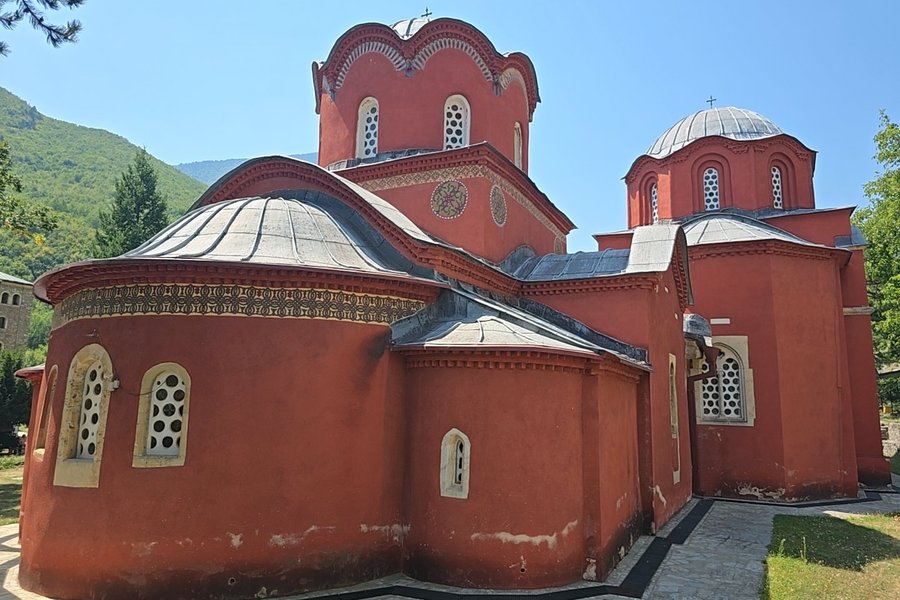
We visited all 4 inscribed sites of the Medieval Monuments in Kosovo in August 2025. An update is provided on each of the sites for any visitors. I won't go into the reasons for the inscribed sites as the information is available already with previous reviews. The Paintings within the Churches in the Monastery are very impressive but if you have visited a number of other painted Monasteries, you may think what is the difference, however these are very significant to the Serbian History. These 4 locations are still listed as endangered given the conflict and dispute with Kosovo (Disputed Country) and Serbia. An hour to 2 hours per site is suitable.
Gracanica Monastery - This site is located on the outskirts suburbs of Pristina and easily visited by public bus from Pristina or a very cost-effective local Taxi. We had a hire car and used this to visit on the commencement of our journey across Kosovo. Free Parking is available out the front and it is free to enter the Monastery with no security requirements to enter. Rolls of barbed wire is still present and evident on top of the outer walls of the Monastery. No Photography is allowed within the Church itself (as was all the sites). The Monastery was advertised to be open at 9.00am and it was open at 9.30 on a Wednesday when we attended. A small gift shop is located within the Monastery and tours can be purchased if you wish to do so …
Keep reading 0 comments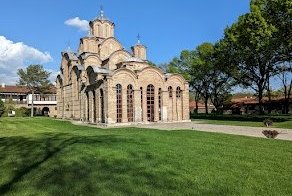
Me and my cabbie were still in Serbia. We had driven from Novi Pazar, a Muslim town in Serbia, to Raška and were now approaching the border into Kosovo. It was here that I noticed a weird info sign for four orthodox churches.
Now, you need to know that Serbia has a) plenty of orthodox churches and b) plenty of signs advertising these churches along the roads. But this sign was different, as it didn't advertise the local village church or a nearby monastery. Instead, it was promoting churches more than 100km away, i.e. not in Serbia proper. It took me a little while to process: They were referring to the churches included in this inscription. Turns out, these are the holiest of holy churches for Serbians and they are deeply tied into the founding myth of Serbia.
The Serbian Empire's core in medieval times was Kosovo. If you travel in Southern Serbia you quickly understand why: Southern Serbia is quite hilly (not great for agriculture) while Kosovo is flat and way better suited for large scale agriculture. The German historic name for Kosovo is Amselfeld (field of blackbirds) gives you an idea. It was also in Kosovo that the Battle of Kosovo took place against the rising Ottoman Empire in 1389.
Eventually, though, the Ottomans conquered Kosovo. Over the centuries a migration of Serbs (Christians) North and Muslims South took place. For roughly 200-300 years Kosovo has been majority Kosovo Albanian. In 1991, 80% of …
Keep reading 0 comments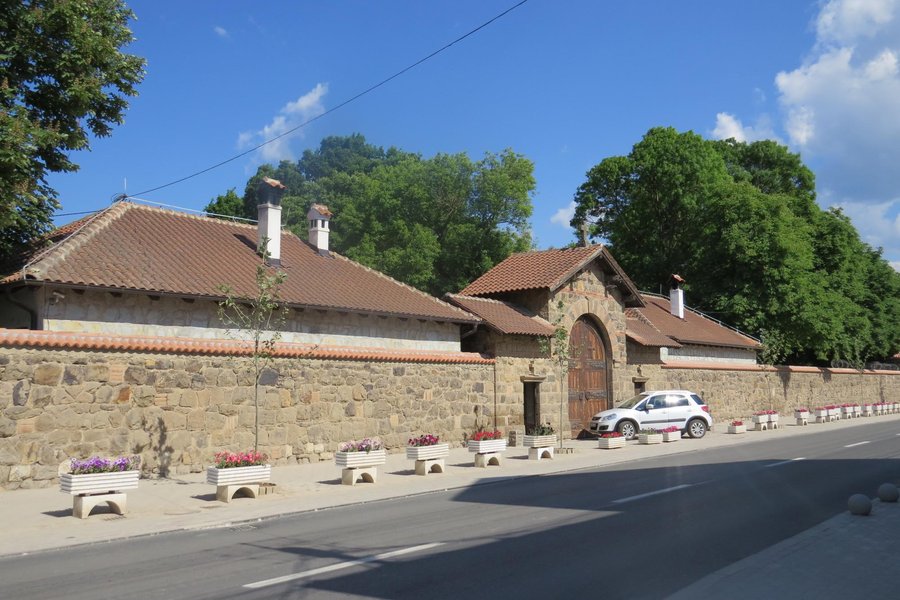
I honestly expected quite a bit of this site. Afterall these monasteries are widely regarded as some of the best orthodox works. I really hoped I wouldn't find some minor remains or worse yet repainted frescos.
I was very pleasantly surprised. These monasteries rank among the most beautifull I've ever seen. They are surprisingly monumental, with high ceilings; and they're covered in magnificent frescos. The structure IS also quite particular, with high square columns used as canvases. If I had to note a downside is that they feel somewhat like a testament to the past and not part of a living tradition. The churches are somewhat cold, with no incense and no candles.
Now onto the specifics. I was Lucky to visit all 4 locations of the site, though I could not enter the churches in Prizren. Here's my overview of them:
Gračanica: It's sits just un the outskirts if Pristina. you'll know you're arriving when you start seeing serbian flags. I didn't check, but It very much looked like there was an important serbian community centered around the monastery. Here we encountered one of the most shocking side about visiting this site. All these churches are walled with barbed wire. In 2014 hundreds of monasteries, including some in this site, were burned. Since then they're all protected, mainly by the KFOR. Gračanica turned out to be a beautifull Monastery.
Prizren: as notes I did not visit the interior of Prizren's churches (which were burned). The …
Keep reading 0 comments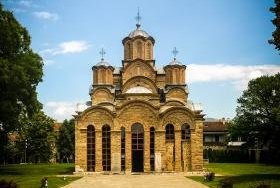
I visited the Medieval Monuments in Kosovo last week while staying in Pristina. I only had enough time to see Gracanica Monastery, but I very much enjoyed my time there.
The monastery is a lot like other medieval Orthodox Churches on the UNESCO list, but I thought the frescoes inside the church were especially vibrant.
I did not have a hard time getting there. I read online that the easiest way from Pristina to Grananica was to get a taxi arranged by your hostel or hotel. It cost me 15 euros for a taxi there and bring me back to the city.
Keep reading 0 comments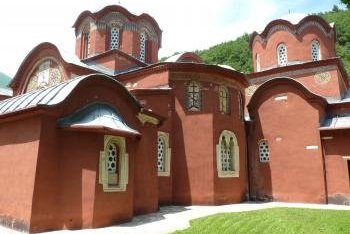
We visited the Kosovo Monasteries at Pec and Decani in June 2017. In fact, in what was possibly an excess of enthusiasm for Mediaeval Serbian monasteries, we took in consecutively, in under 24 hours, the Monastery at Studenica and those at Djurdjevi Stupovi and Sopocani before driving south into Kosovo from Montenegro on the mountain road over from Rozaje. The drive from Sopocani to the monastery at Pec took around 3 hours including 2 frontier crossings.
Pec (Peja) is a surprisingly busy town with a chaotic “anything goes” atmosphere and building taking place everywhere – it isn’t clear how “controlled” all this activity is, and neither is the nature of its economic underpinning! Kosovo has the reputation of being something of a mafia state based on smuggling of goods, narcotics and people with “construction” being a good money laundering method - See . The monastery lies to the west of the town at the entrance to the Rugova Gorge and, as we approached the town, it was obvious where we needed to be - unfortunately the main road came to a dead end at a square, there were no signs for the Monastery and the nearby “Tourist Office” was closed for “Brek”! A taxi driver wouldn’t assist us unless we took him to get there but the receptionist in the nearby main hotel provided a useful sketch map! The monastery at the moment is situated at the very end of building developments extending West from Pecs – it must …
Keep reading 0 comments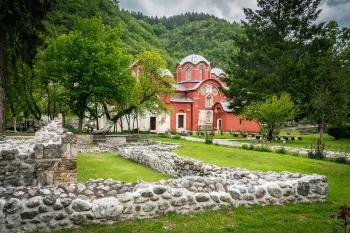
I visited the Medieval Monuments in Kosovo in April 2016. In particular, I visited the Patriarchate of Pec Monastery.
It is a bit confusing because there are no signs, and the monastery is walled off like a military fortress. There is a gate with a security officer you have to go through to get to the site, and you have to present your passport to get through.
Once pass the gate it was very straight forward. Just parked my car and walked around the grounds.
Read more about the Medieval Monuments in Kosovo on my website.
Keep reading 0 comments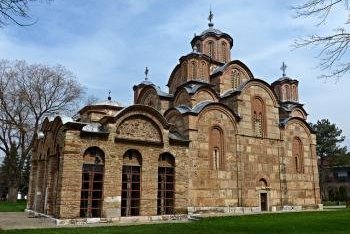
I visited this WHS in March 2016. Out of the 4 sites inscribed the easiest to visit and the only ones open to visitors are the monasteries of Decani and Gracanica. Decani is closer to Prizren while Gracanica is very close to the capital Pristina. Having read that the easiest way to visit Kosovo overland is through Macedonia, I decided to cross the border from Skopje to Pristina and it was pretty straighforward. Having a GPS navigator is only necessary to find Gracanice as there are no road signs whatsoever. There is ample space to park in front of the monastery walls just to the side of the main road in Gracanice. The Serbian flags are no longer paraded as was the case when I passed through the Srpska Republic last year. The first surprise is the tranquil atmosphere as you step inside the courtyard and leave the traffic behind you. The few nuns present were going about their lives and the younger ones in the monastery gift shop were quite friendly and curious even though they spoke no English. When I visited the Gracanica monastery, a baptism ceremony was about to finish so I was lucky to be able to view some of the magnificent old frescoes all lit up even if for a few moments. The 4 columns supporting the main dome are beautifully decorated and the Medieval frescoes pretty much cover all the walls. There was a priest or brother whose main purpose was to make sure …
Keep reading 0 comments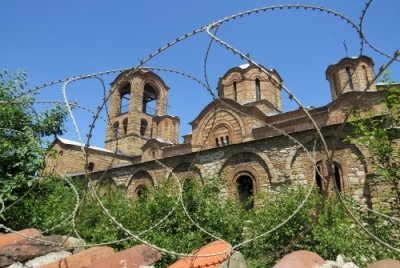
Basing myself in Kosovo’s capital Pristina, I visited 2 out of the 4 locations that comprise the Medieval Monuments in Kosovo: Gracanica Monastery and Prizren's Our Lady of Ljeviš church. They are considered ‘In Danger’ since 2006 as they need “urgent conservation work” and safeguarding, due to the post-conflict situation which saw this Serbian WHS end up on the territory of the partially recognised state of Kosovo.
In the months prior to this trip, I had scoured the Internet for information on how to reach the monastery of Gracanica. It lies just 10 kilometers from Pristina, but in a Serb enclave whose surroundings pretend it does not exist. I was almost deterred by the transport issues described in the Lonely Planet chapter on Kosovo (“Rumours abound that bus drivers won’t let you on or off if you tell them where you’re going”) and the stories that run on Tripadvisor about encountering “unwelcoming nuns” at the monastery itself.
In reality, it took me a lot of effort and time (2 hours) to get there. But that had more to do with Pristina’s complex public transport system than with the sensitivity of my destination. The networks of city buses and regional buses are not connected, you have to walk several hundred meters between them and it was a mystery to me which bus would stop where. Eventually, I ended up on a road behind the Albi Mall on the outskirts of the city, where buses to Gjilan come through that …
Keep reading 0 comments
Well known but currently a bit difficult to visit. All monuments are protected either by KFOR soldiers (Gracanica, Pec, Vysoki Decani) or Albanian-Kosovian policeman (Prizren). The road are completely unmarked (Serbian signs were removed) but you can ask people how to get there. First three sights are living monasteries under KFOR protection but they can be visited (secirity check necessary) while Prizren is currently unable to see from inside.
Keep reading 0 comments
From all of those churches my favorite one would definitely be Our Lady of Ljeviš. It is an outstanding example of late byzantine architecture. Throughout its long history it was a holly place for Christians and Muslims, who converted it during the Ottoman rule and named Friday Mosque (al-jumʿa xhamia in Arabic). This name is still in use among Muslim Albanians in the city of Prizren.
Unfortunately the devastation of the paintings inside the church - initiated during Ottoman times - reached its peak during the march 2004 riots. The restoration of the site is still in progress.
Keep reading 0 comments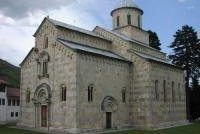
This is probably one of the few WHS where you have to go through military checkpoints (if they even let you) and you'll have several guns and a tank pointing at you before you enter; this place has a rich history with maybe not such a good location. The church looks beautiful on the outside with two different types of local stones. The walls and ceilings inside are covered with Byzantine paintings. There are about 30 monks living inside the monastery and their main task all day is praying. If you are lucky an English-speaking monk will open the church for you and will answer your questions. Father Ezekial speaks very good English, so if you go it might be worth asking for him. He was able to tell us about the history of the Serbian Orthodox church, the history of the monastery, daily life as a monk, and even some surprises: during the war in Kosovo, the (Serbian) monks at Decani protected Alabanian Kosovar Moslems by allowing them to hide in the Monastery.
If you like this monastery you should definitely head over to the Patriarchate monastery near Peja: The paintings there are in even better shape and the Monastery is more important (in the Serbian Orthodox Church) than the Decani monastery.
Keep reading 0 comments
The extension of this site to cover other medieval monuments in Kosovo makes good sense from a number of angles. Whatever the political considerations, these other sites probably deserved to be listed from the outset and Gracanica, the only one I can actually speak of, struck me as World Heritage material as soon as I saw it. While Gracanica town, with its history of division, is rather a sad place, the walled monastic enclosure could be in a different country and you have to remind yourself, if you really must, that there is an armoured car - there more for the presence than anything else - outside the gate.
The church is very imposing from the outside but appears small and more personal from within. The frescoes - even including one of the foundation charter - are as magnificent as the building. This is one of the great sights of the Balkans and now has the world status it deserves.
Keep reading 0 comments
